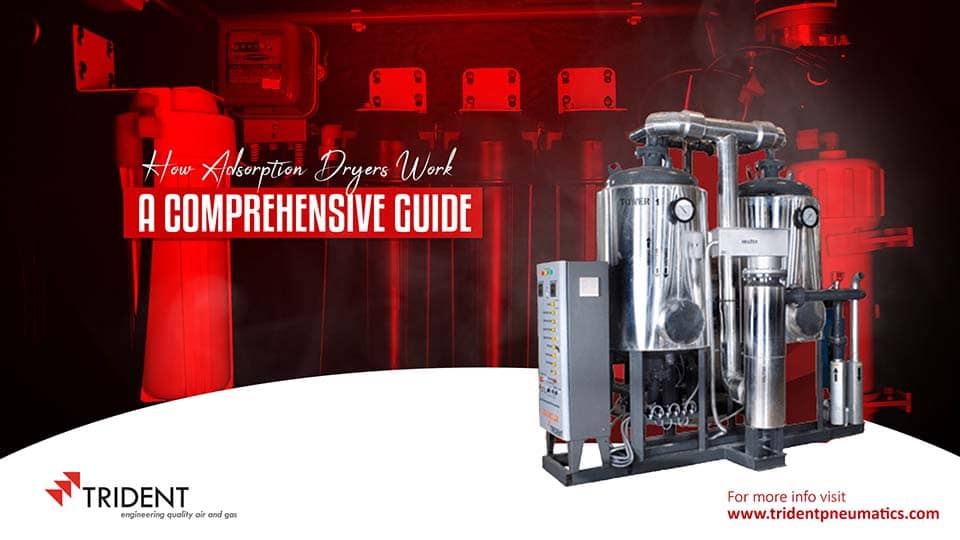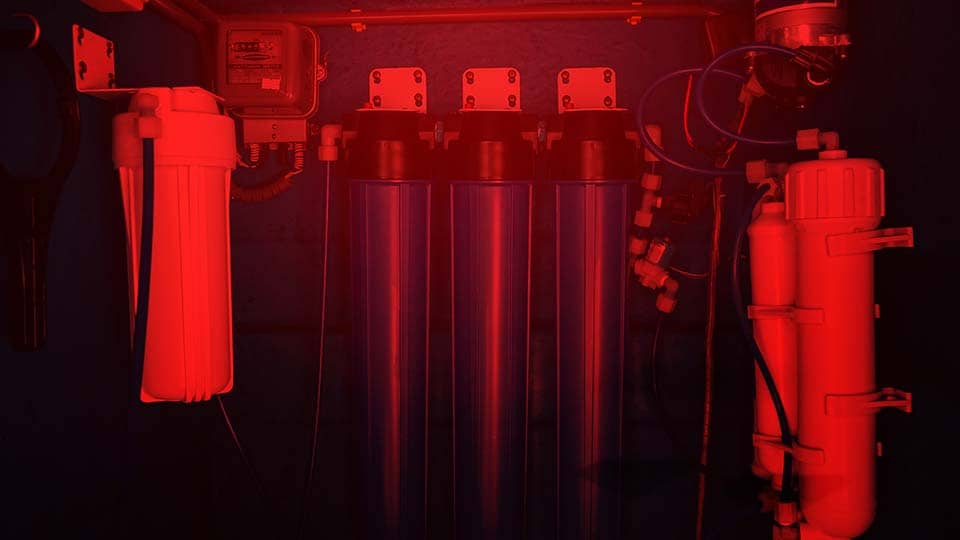
Compressed air is used in various industries, from manufacturing to healthcare to food processing. However, compressed air can contain moisture, which can cause problems for equipment and processes. Adsorption dryers are air dryers that remove moisture from compressed air.
In this blog post, we will discuss how adsorption dryers work, the different types of adsorption dryers, and the benefits of using adsorption dryers.

Adsorption dryers use a desiccant material to remove moisture from compressed air. Desiccant is a material that has a strong affinity for water vapour. When compressed air passes through the desiccant, the water vapour is attracted to the desiccant and held in place.
Two main types of desiccant materials are used in adsorption dryers: activated alumina and silica gel. Activated alumina is a more efficient desiccant than silica gel but is more expensive.
There are two main adsorption dryers: heatless adsorption dryers and heat-reactivated adsorption dryers.
There are several benefits to using adsorption dryers, including:
The basic principle of operation of an adsorption dryer is as follows:
The desiccant material is typically contained in a series of cartridges or vessels. It is necessary to regenerate the desiccant as it becomes saturated with water vapour. This is done by passing dry air through the desiccant in the opposite direction. The dry air helps to remove the water vapour from the desiccant and restore its drying capacity.
use "purge regeneration" to regenerate the desiccant. In this process, a small amount of dry air is diverted from the main air stream and passed through the desiccant. The dry air helps to remove the water vapour from the desiccant and restore its drying capacity.
Heatless adsorption dryers are more energy-efficient than heat-reactivated dryers but cannot achieve as low a dew point. The temperature at which airborne water vapour condenses is known as the dew point. A lower dew point indicates that the air is drier.
Heat-reactivated adsorption dryers use heat to regenerate the desiccant. The desiccant is heated to a high temperature, which causes the water vapour to be released. The water vapour is then condensed and removed from the dryer.
Heat-reactivated adsorption dryers can achieve a lower dew point than heatless dryers but are less energy-efficient.
The type of adsorption dryer that is right for you will depend on your specific needs. A heatless adsorption dryer may be a good option if you need an energy-efficient dryer. However, a heat-reactivated adsorption dryer may be a better choice if you need a dryer that can achieve a very low dew point.
Adsorption dryers are used in a wide variety of applications, including:

The future of adsorption dryers is bright. As the demand for compressed air continues to grow, so will the need for dryers that can remove moisture effectively and efficiently. Adsorption dryers are well-positioned to meet this demand, offering several advantages over other types of dryers.
In addition to their reliability and efficiency, adsorption dryers are becoming more affordable. This makes them a more attractive option for businesses of all sizes.
As technology evolves, adsorption dryers will become even more efficient and affordable. This will make them the preferred choice for businesses that must ensure their compressed air is dry.
In addition to the type of dryer, there are other factors to consider when choosing an adsorption dryer, such as the flow rate, the dew point, and the operating temperature. You should also consider the size and weight of the dryer, as well as its ease of installation and maintenance.
If you are looking for an adsorption dryer, contact Trident Pneumatics today. We offer a wide range of adsorption dryers to meet the needs of different applications. We can help you choose the right dryer for your needs and budget.
Adsorption dryers are a reliable and effective way to remove moisture from compressed air. They offer several benefits, including reduced moisture content, improved process reliability, extended equipment life, and reduced maintenance costs.
An adsorption dryer is a good option if you are looking for a reliable and effective way to remove moisture from compressed air. Trident Pneumatics offers a wide range of adsorption dryers to meet the needs of different applications. Contact us today to learn more about our products and services.
July 20, 2023 | Trident
Copyright© 2023 by TRIDENT PNEUMATICS All Rights Reserved